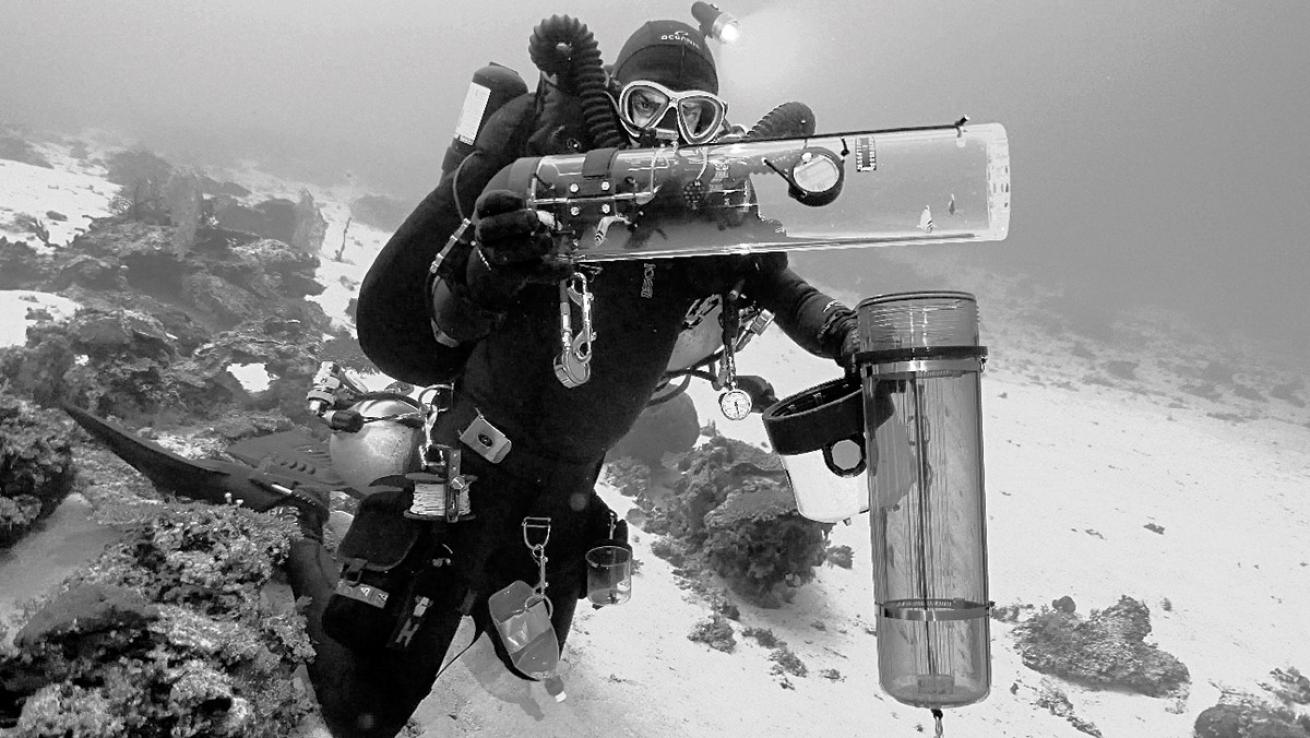Invention Helps Researchers Safely Bring Fish Up from the Depths

Credit neededThe SubCAS, or Submersible Chamber for Ascending Specimens, allows divers to bring fish to the surface in a small pressurized tank.
Marine biologists with the California Academy of Sciences and Monterey Bay Aquarium dive to the ocean’s “Twilight Zone,” studying obscure species in 200 to 500 feet of water. They’re able to do so thanks to a bevy of advanced dive equipment such as closed-circuit rebreathers and DPVs. But the fish they bring up for further study have not been afforded such luxuries — until now.
These scientists invented the SubCAS, or Submersible Chamber for Ascending Specimens, which allows them to bring the fish to surface in a small pressurized tank. Before, it was necessary to needle the fish in their swim bladder in order to prevent overexpansion.
“A rapid ascent can rupture a fish’s swim bladder,” says Luiz Rocha, the Academy’s Curator of Fishes, in a release. “Using an adjustable pressure-control valve, we ensure that the pressure inside the chamber is similar to the depth where the fishes were collected. Over the course of two to three days, we bring them to the surrounding surface pressure in a highly controlled manner.”
The SubCAS has a transparent jar where the fish are stored and larger housing that has a connected submersible depth gauge, adjustable control valve and thermometer. Once the team makes it to 180 feet, they insert the jar into the larger housing and blow an air bubble into its lid, which expands during their ascent to help maintain pressure.
At 100 feet, the specimens are handed off to another group of scientists, who ensure they make it safely to the surface and back to California. In all, these fish — some of which have never been observed — go from a depth of 500 feet to a height of 35,000 feet and back to sea level without harm.










